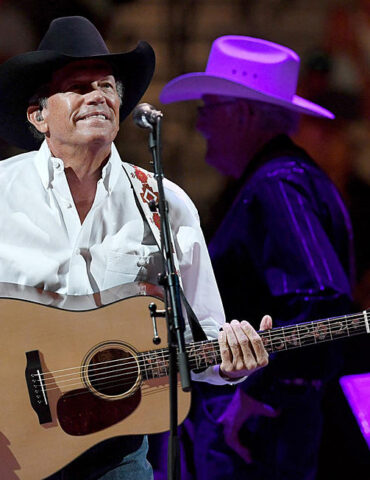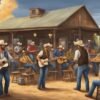Advertise with us
Contact Us
- info@WildCountry.Radio
- Wild Country Facebook
- Instagram Wild Country
- Twitter Wild Country
Country Music Radio Station – Live Country Radio Live
 play_arrow
play_arrow
Luke Bryan admin
 Brett Kissel - Coffee with Her
Checking-in from Frothy Monkey in Franklin!
Sheri
Brett Kissel - Coffee with Her
Checking-in from Frothy Monkey in Franklin!
Sheri
 Little Big Town - Pontoon
Good Morning Charlotte, See you guys out on the lake!
Jason Aldean
Little Big Town - Pontoon
Good Morning Charlotte, See you guys out on the lake!
Jason Aldean
 Jason Aldean - My Kinda Party
Come check out my new place on Broadway Street, Nashville's Southern eatery and saloon. It has four levels with live music, TV sports, a gift shop, and a rooftop bar...
Jason Aldean - My Kinda Party
Come check out my new place on Broadway Street, Nashville's Southern eatery and saloon. It has four levels with live music, TV sports, a gift shop, and a rooftop bar...

Country music, as we know it today, has deep roots in the folk traditions of the Southern United States. These traditions were significantly shaped by the cultural contributions of European immigrants, particularly those from the British Isles. The ballads, reels, and jigs brought by these settlers were foundational to the genre, providing the narrative storytelling and melodic structures that continue to define country music. These European influences melded with the existing musical forms in America, creating a unique soundscape that would evolve into country music.
Another critical influence on early country music was African American musical traditions. The blues, with its emotive expression and distinctive chord progressions, and gospel music, with its powerful vocal harmonies and spiritual themes, were integral to the development of the genre. These elements were often incorporated into the music played by white musicians in the South, leading to a rich, hybrid musical tradition that would become the bedrock of country music.
Key figures in the early 20th century, such as the Carter Family and Jimmie Rodgers, played pivotal roles in shaping the genre. The Carter Family, with their traditional folk songs and close-knit harmonies, epitomized the early sound of country music. Their recordings in the late 1920s and 1930s brought the music of rural America to a broader audience, cementing their status as country music pioneers. Jimmie Rodgers, known as the “Father of Country Music,” blended blues, folk, and yodeling to create a distinctive style that resonated with many listeners. His songs often dealt with themes of hardship and wanderlust, reflecting the experiences of many Americans during that era.
The advent of early recording technology also played a crucial role in popularizing country music. Innovations in recording and radio broadcasting allowed these early country musicians to reach audiences far beyond their local communities. This technological advancement helped country music gain national recognition, setting the stage for its continued evolution and growth throughout the 20th century.
The period from the 1940s to the 1960s is often referred to as the ‘Golden Age’ of country music. This era witnessed the emergence of two influential subgenres: honky-tonk and the Nashville Sound. These styles not only defined the musical landscape of the time but also laid the foundation for the evolution of country music.
Honky-tonk, characterized by its raw, emotional lyrics and strong rhythm, became immensely popular during the 1940s. Pioneering this subgenre was Hank Williams, whose poignant songwriting and distinctive voice captured the hearts of many. Hits like “Your Cheatin’ Heart” and “I’m So Lonesome I Could Cry” exemplify the essence of honky-tonk, reflecting themes of heartache and resilience.
As the 1950s approached, the Nashville Sound began to take shape, blending traditional country elements with pop music sensibilities. This polished, orchestrated style aimed to reach a broader audience and propelled country music into mainstream popularity. Patsy Cline stands out as a quintessential figure of this subgenre. Her timeless classics such as “Crazy” and “I Fall to Pieces” showcased the smooth, sophisticated production that became synonymous with the Nashville Sound.
Another iconic artist of this era, Johnny Cash, bridged the gap between honky-tonk and the Nashville Sound. Known for his deep, resonant voice and rebellious image, Cash’s contributions to country music were profound and enduring. Songs like “Ring of Fire” and “Folsom Prison Blues” remain influential, reflecting his unique blend of storytelling and musical innovation.
The role of radio shows, particularly the Grand Ole Opry, was pivotal in promoting country music during this golden age. As a premier platform for country artists, the Grand Ole Opry broadcasted performances to millions, significantly enhancing the genre’s visibility and popularity. It served as a launching pad for many artists, solidifying their careers and introducing country music to new audiences nationwide.
Through the rise of honky-tonk, the Nashville Sound, and the contributions of legendary artists, the 1940s to the 1960s truly represent a transformative period in the history of country music. This golden age not only shaped the genre’s identity but also cemented its place in the annals of American music history.
From the 1970s to the 1990s, country music underwent profound changes, expanding its horizons and embracing a variety of subgenres. One of the most pivotal movements of this era was the rise of outlaw country, led by iconic figures such as Willie Nelson and Waylon Jennings. This subgenre was characterized by its rebellious spirit and a sound that diverged from the polished productions of Nashville’s mainstream country music. Nelson and Jennings, along with other artists, sought creative freedom and authenticity, resonating with audiences who were drawn to their raw, honest storytelling.
During the same period, country pop emerged as a significant force, blending traditional country elements with popular music influences to reach a broader audience. This genre fusion was epitomized by artists like Kenny Rogers, whose crossover hits brought country music to mainstream radio and television, thereby broadening its appeal. Dolly Parton, with her distinctive voice and charismatic persona, also played a crucial role in popularizing country pop. Her hits like “Jolene” and “9 to 5” captured the hearts of many and showcased the versatility of country music.
The impact of female artists during this era cannot be overstated. Apart from Dolly Parton, other influential figures included Reba McEntire, who brought a contemporary flair to the genre with her powerful vocals and emotional depth. These artists not only achieved commercial success but also paved the way for future generations of female country musicians.
Television and music videos also began to play a vital role in shaping the modern country music industry. Shows like “Hee Haw” and music video channels such as CMT (Country Music Television) provided platforms for artists to reach wider audiences. The visual appeal of music videos complemented the storytelling nature of country music, further enhancing its popularity and accessibility.
Overall, the 1970s to the 1990s were transformative years for country music. The emergence of subgenres like outlaw country and country pop, along with the contributions of female artists and the influence of visual media, collectively broadened the genre’s appeal and set the stage for its continued evolution.
In the 21st century, country music has experienced significant evolution, influenced by the integration of various musical genres and the advent of digital technology. Contemporary artists like Taylor Swift, Keith Urban, and Carrie Underwood have been at the forefront of this transformation, blending traditional country sounds with pop, rock, and other genres. Taylor Swift’s transition from pure country to a more pop-oriented sound has set a precedent for genre fluidity, demonstrating that modern country music can transcend conventional boundaries while maintaining its core essence.
Keith Urban and Carrie Underwood have similarly contributed to this genre fusion, incorporating rock elements and mainstream appeal into their music. Urban’s guitar-driven tracks and Underwood’s powerful vocals exemplify how contemporary country artists can innovate while respecting the genre’s roots. Their success has inspired a new wave of musicians who are unafraid to experiment with different styles, leading to a more diverse and dynamic country music scene.
The rise of digital streaming platforms has also revolutionized the distribution and popularity of country music. Services like Spotify, Apple Music, and YouTube have made it easier for artists to reach a global audience, breaking down geographical barriers that once limited the genre’s reach. Social media platforms such as Instagram, Twitter, and TikTok have further amplified this effect, allowing artists to engage directly with fans, promote their music, and build their brand presence in real time. This digital landscape has democratized the music industry, giving independent artists a platform to showcase their talent alongside established names.
Despite these advancements, there is an ongoing debate about what constitutes ‘true’ country music. Purists argue that the genre’s identity is being diluted by the influx of pop and rock influences, while others believe that this evolution is necessary for the genre’s survival and growth. As country music continues to evolve, it is likely to see a balancing act between preserving its traditional elements and embracing new sounds and technologies. This dynamic interplay will shape the future of country music, ensuring its relevance and appeal for generations to come.
Written by: admin
Country Music History Country Music Pioneers Music Evolution

todayApril 13, 2023 231 2


Digital Broadcasting Network 2017 Copyright Wild Country Radio